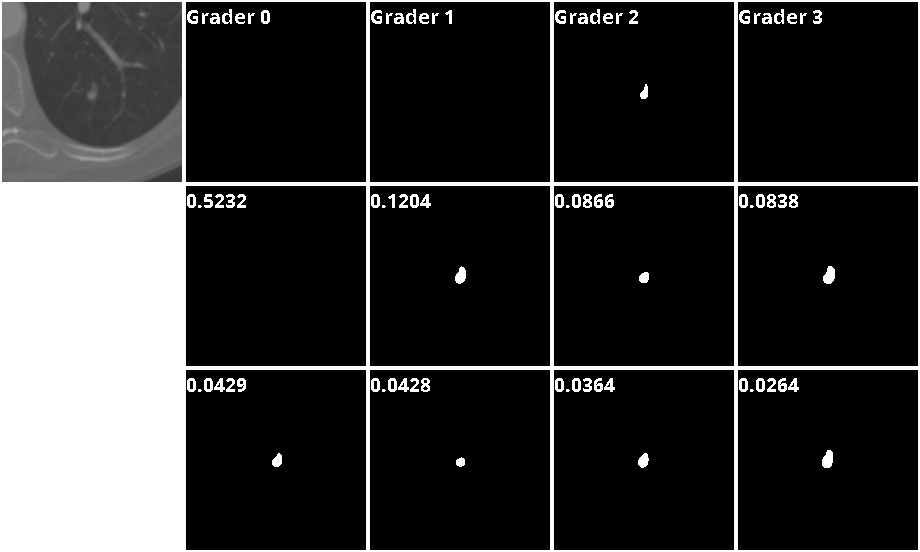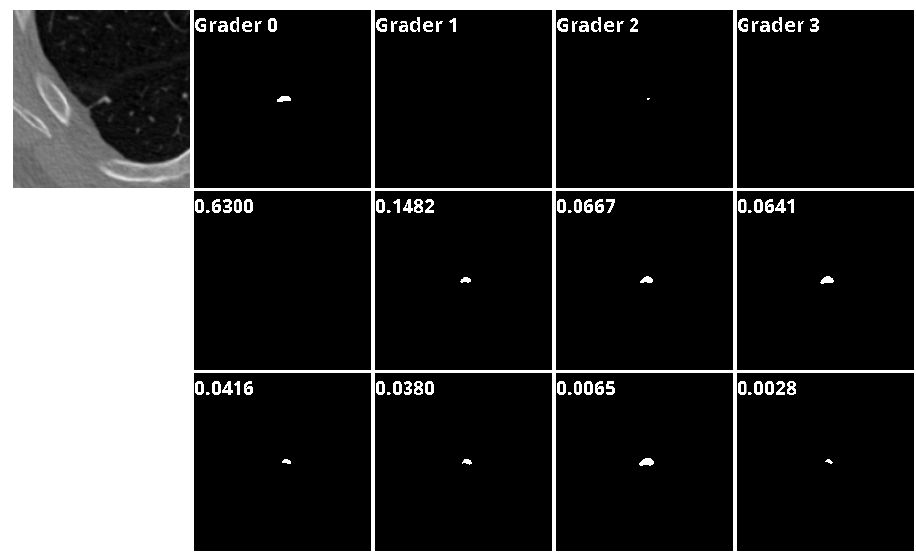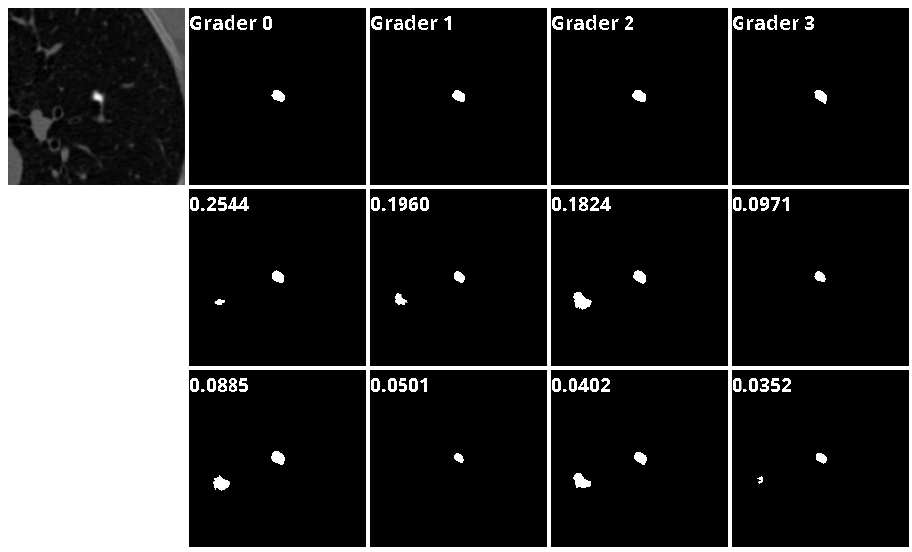Modal Uncertainty Estimation via Discrete Latent Representationn
Many important problems in the real world don't have unique solutions. It is thus important for machine learning models to be capable of proposing different plausible solutions with meaningful probability measures. In this work we introduce such a deep learning framework that learns the one-to-many relationships between the inputs and outputs. The key of our approach is the use of a discrete latent space, where each item represents a latent mode hypothesis for a particular type of input-output relationship. The discrete latent representations and the uncertainty associated to any input are learned jointly during training. We thus call our framework modal uncertainty estimation. We extensively validate our framework on both real and synthetic datasets.
Example 1:
Lesion segmentation of possibly ambiguous lung CT scans: In the following examples, we use the LIDC-IDRI dataset, which contains 1018 lung CT scans from 1010 patients. Each scan has lesion segmentations by four (out of totally twelve) expert graders. The identities of the graders for each scan are unknown from the dataset. Samples from the testing set can be found in the first row of the following figure. As can be seen, the graders are often in disagreement about whether the scan contains lesion tissue. We hypothesize that the disagreement is due to the different assumptions the experts have about the scan. For example, judging from the scan's appearance,one of the graders might have believed that the suspicious tissue is in fact a normal tissue based on his/her experience, and thus gave null segmentation. There are also other possible underlying assumptions for the graders to come up with different segmentation shapes. Our task is to identify such ambiguous scenarios by proposing distinct segmentation results from the corresponding latent hypotheses with their associated probabilities, which will be helpful for clinicians to easily identify possible mis-identifications and ask for further examinations of the patients.

Visualization of our results on the highly ambiguous samples from LIDC-IDRI dataset.The first row shows the input samples and their segmentations, and the next two rows show the top-8 predictions from our method. The uncertainty estimation for each segmentation proposal is annotated on the upper-left corner. There is a disagreement between graders to judge if there is a leision. Our method can give multiple segmentation results with their corresponding probabilities. In this example, more than 43% of chance that there is a leison, based on the training data. It give clinician a signal for further examinations.
Example 2:

There is a disagreement between graders to judge if there is a leision. Our method can give multiple segmentation results with their corresponding probabilities. In this example, more than 33% of chance that there is a leison, based on the training data. It give clinician a signal for further examinations.
Example 3:

All graders have pointed out that there is a leision in the middle of the CT scan. A possible leision at the bottom left is not identified by all graders. Our network trained by massive data has identify this possible leision with significant probablity.